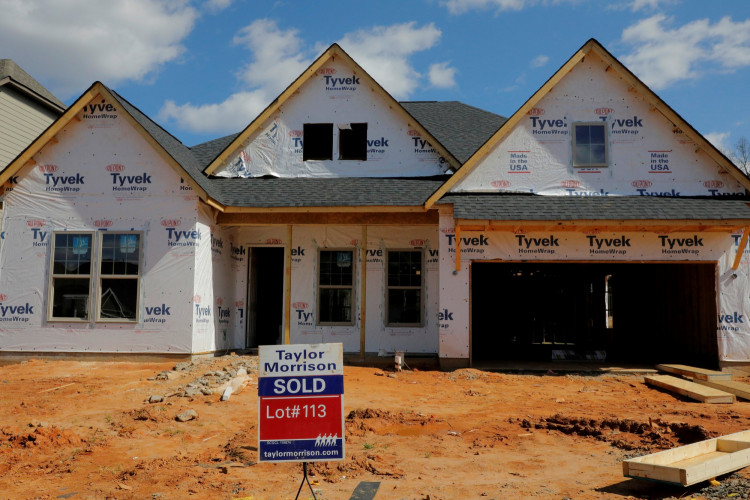A significant drop in mortgage rates has triggered a wave of refinancing activity across the United States, with homeowners eager to take advantage of the opportunity to reduce their monthly payments. The average 30-year fixed-rate mortgage now stands at 6.49%, slightly higher than last week but still well below the peak rates seen earlier this year and the two-decade high reached last fall, according to Freddie Mac.
This decline in rates has led to a dramatic increase in mortgage applications, particularly for refinancing. The Mortgage Bankers Association (MBA) reported a 17% surge in total mortgage applications last week, with refinancing applications skyrocketing by 35%. This is the highest level of refinancing demand in more than a year, reflecting homeowners' eagerness to capitalize on the lower borrowing costs.
"Given the bond market's sensitivity to data, this should only be a temporary bump in refinance applications, as mortgage bond prices have come down about 0.625 points from their highs on August 2nd," said Emily Overton, Capital Markets Analyst at Veterans United Home Loans.
The overall demand for refinancing has been further boosted by specific categories of loans, such as VA loans, which saw a 77% increase in refinance applications last week. Overton noted that approximately 200,000 VA loan borrowers currently have a mortgage rate of 7% or higher, making the current rate of 6.49% particularly attractive.
Despite the enthusiasm for refinancing, the broader housing market remains challenging for many Americans. High home prices, coupled with still-elevated mortgage rates, continue to keep the dream of homeownership out of reach for many, particularly in urban areas with rapid home-price growth like San Diego and New York. According to data from the National Association of Realtors (NAR) and S&P Global, home prices have hit record highs multiple times this year.
"Housing has a lot of challenges ahead of it, not the least of which are high mortgage rates, high home prices, and a lack of inventory," Tom Porcelli, Chief US Economist at PGIM Fixed Income, told CNN. "The average payment on a mortgage is still double from four years ago."
The persistent shortage of available housing units continues to push prices upward. While total housing inventory has improved each month in 2024, demand still far exceeds supply in many markets. Some regions, such as Tampa, Denver, and Minneapolis, have seen a slowdown in shelter-cost growth due to increased residential construction. However, the overall housing affordability crisis remains a significant obstacle, particularly for the Federal Reserve's efforts to control inflation.
Inflation, while significantly reduced from the 40-year highs of 2022, remains a concern. The Consumer Price Index (CPI) registered a 2.9% annual rate in July, marking the first time in over three years that inflation has dipped below 3%. However, shelter costs, which made up nearly 90% of the increase in consumer prices last month, continue to be a major factor driving inflation.
Excluding shelter, the CPI was up 1.7% for the 12 months ended in July, according to the Labor Department.
Looking ahead, economists predict that borrowing costs will likely fall further this year as the Federal Reserve is expected to begin cutting interest rates. With inflation showing signs of being under control and the job market weakening, there is growing speculation that the Fed will lower its benchmark lending rate by a quarter-point in September. Some traders even anticipate a larger cut of a half-point.
The Fed's decisions on interest rates have a direct impact on mortgage rates, as movements in the benchmark 10-year US Treasury yield influence borrowing costs across the economy. Typically, bond yields fall after weak economic data, which increases the likelihood of Fed rate cuts. Conversely, signs of a robust economy tend to push bond yields higher, encouraging the Fed to maintain higher rates.
While mortgage rates are expected to drop further this year, it remains uncertain whether they will fall below 6%. Even with the recent decline, rates are still higher than anything seen in the decade leading up to 2022 when the Fed began its aggressive rate hikes to combat inflation.






